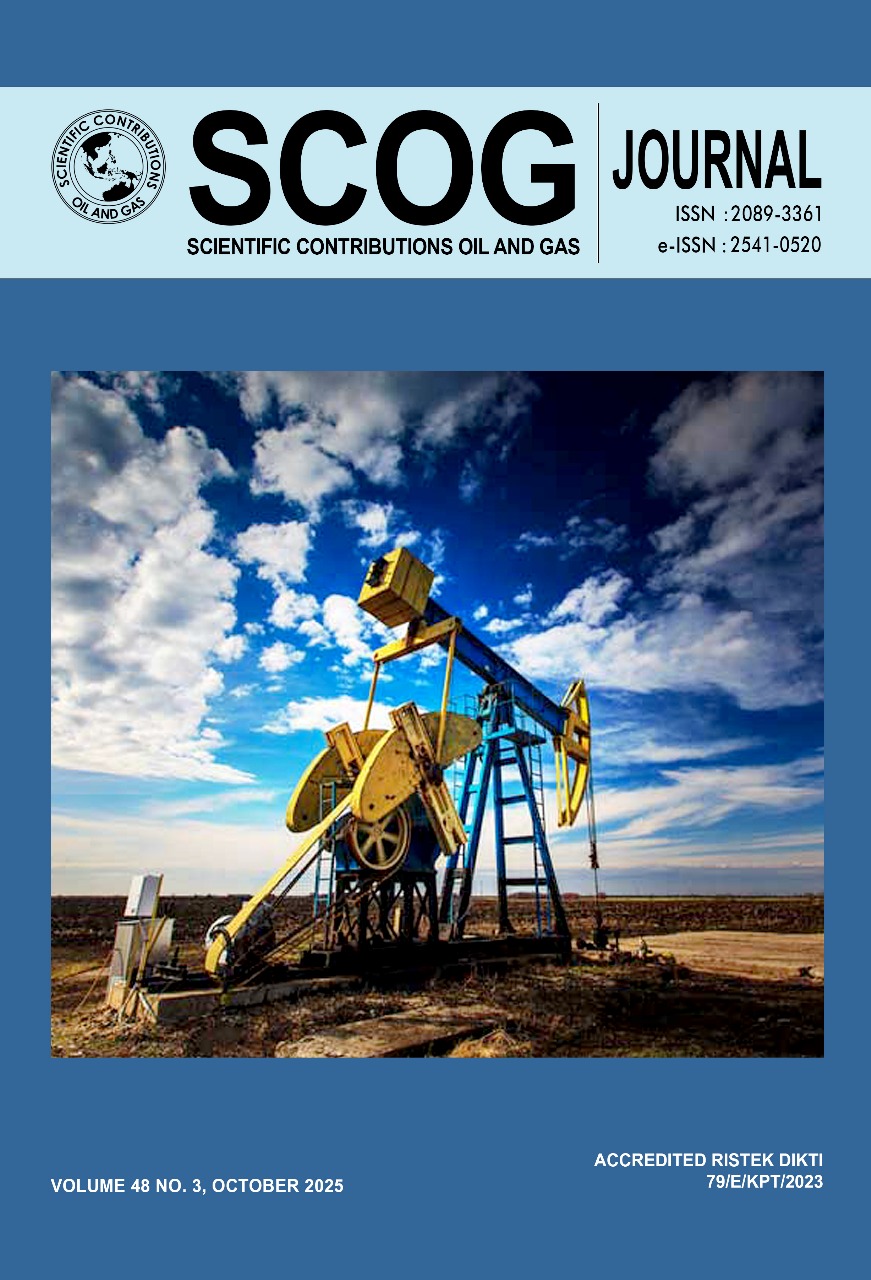Investigation And Optimization Of Enhanced Oil Recovery Mechanism By Sophorolipid Biosurfactant In Carbonate Reservoir
Keywords:
sophorolipids, coreflooding simulation, optimization, sensitivity analysis, Sobol AnalysisAbstract
The Remaining Oil in Place (ROIP) in carbonate rock reservoirs is often substantial. This is due to the tendency of carbonate rocks to be oil-wet in terms of wettability. The oil's inherent property of wetting the rock causes the residual oil to adhere to the rock's pores, making it challenging to extract to the surface. One method to enhanced oil recovery (EOR) is through biosurfactant injection, i.e., sophorolipid, a fungal biosurfactant that possesses the properties of surfactants in general. This study aims to evaluate the effectiveness of sophorolipid biosurfactant injection in enhancing oil recovery in carbonates, as well as to identify the dominant mechanism at work during the injection process and optimize it through coreflooding simulation.
This research was conducted through laboratory testing and validation using a simulator, comprising two phases: coreflooding tests and coreflooding simulations. Coreflooding simulation was conducted to reduce the need for coreflooding experiments, which are time-consuming and costly. The simulator used in this research is CMG-GEM with sensitivity parameter and optimization using CMOST. The Sobol Analysis was conducted to assess the sensitivity parameters and identify the primary mechanism of sophorolipid. Then, optimization is achieved by adjusting the parameters, such as sophorolipid concentration, pore volume (PV) injection, and injection rate.Coreflooding sensitivity results show that the dominant parameter is the nonwetting trapping number (DTRAPN), which is closely related to the mechanism of wettability alteration and mix viscosity. The effectiveness of the Sophorolipid mechanism in modifying wettability, enhancing displacement efficiency, and facilitating emulsion formation, hence improving sweeping efficiency. The recovery factor (RF) increased from the coreflooding simulation optimization results, reaching 19%-33%.
Published
Issue
Section
License

This work is licensed under a Creative Commons Attribution 4.0 International License.
Authors are free to Share — copy and redistribute the material in any medium or format for any purpose, even commercially Adapt — remix, transform, and build upon the material for any purpose, even commercially.
The licensor cannot revoke these freedoms as long as you follow the license terms, under the following terms Attribution — You must give appropriate credit , provide a link to the license, and indicate if changes were made . You may do so in any reasonable manner, but not in any way that suggests the licensor endorses you or your use.
No additional restrictions — You may not apply legal terms or technological measures that legally restrict others from doing anything the license permits.















